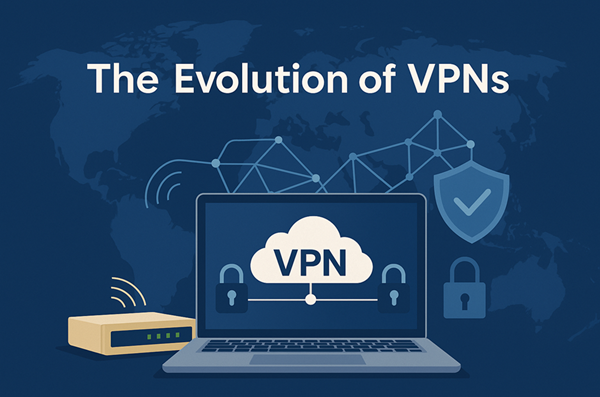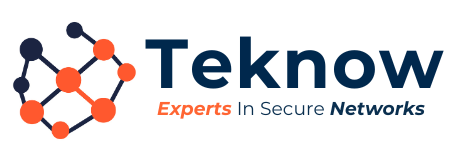
The Evolution of VPNs : Dial-Up to Zero Trust
Remember this sound?
“Brrrr-ding… hiss… krrrshh…”
Congratulations, you’re old enough to remember when remote access meant plugging into a phone line and praying your little 56k modem didn’t drop the connection halfway through your Lotus Notes session.
Welcome to the journey of VPNs from the dial-up days to the dawn of Zero Trust.
🕰️ The Early Days: VPNs and Dial-Up Romance
In the late ’90s, VPNs were like pagers, necessary, a bit awkward, and wildly futuristic at the time.
The earliest VPN protocols like PPTP (Point-to-Point Tunneling Protocol) and later IPSec were designed to connect remote employees securely to corporate resources over the public internet. Think of it as building a private tunnel through a public road, a nifty way to avoid eavesdropping while you accessed files from the office server.
These VPNs were revolutionary. No more physical presence in the office. No more floppy disks (yes, those existed). You could log in from your hotel room or a beach café if you were lucky.
🏢 The Golden Age: Traditional Corporate VPNs
Fast forward to the 2000s: Enterprises doubled down on corporate VPNs to support growing remote access needs. Laptops became standard issue. Office walls didn’t matter as much. If you had a VPN client installed and knew your pre-shared key, you were in.
VPNs became the lifeline for:
- Sales teams working on the road
- IT staff fixing things at 2 AM
- Executives emailing from airport lounges
Protocols like L2TP/IPSec and SSL VPNs became mainstream. VPN concentrators hummed away in datacenters. And of course, the IT helpdesk groaned under the weight of “My VPN won’t connect!” tickets.
🧱 What Still Sticks Around
To this day, many businesses still rely on:
- IPSec tunnels between branch sites
- SSL VPNs for remote workers
- Legacy VPN appliances in the server room
They work… sort of. But the world has changed, and these older models weren’t built for it.
☁️ The Cloud Boom & the Remote Work Tsunami
Then came the cloud. And then came COVID.
Suddenly, everyone needed access from anywhere to everything. Traditional VPNs—designed for occasional remote use were now expected to support full-time, global remote workforces, cloud-hosted apps, SaaS platforms, and BYOD devices.
VPNs quickly became bottlenecks, slowing down performance and piling onto the IT team’s headaches. The “castle and moat” security model crumbled because there was no longer a single castle, and the moat had evaporated.
🚪 Enter the New Guard: ZTNA, SDP & SASE
Here’s where the Zero Trust Network Access (ZTNA) and SASE (Secure Access Service Edge) revolution begins.
If traditional VPNs are like giving someone a master key to the entire building…
ZTNA is like giving them access to just the one locked cabinet they need, only when they need it, and only after they prove who they are, where they are, and whether their device is healthy.
SASE (pronounced “sassy,”) takes things even further. It combines networking and security into one cloud-delivered model. Always on, always updated, delivered wherever you are.
Key upgrades with ZTNA/SASE:
- No more flat access, everything is segmented
- Policies based on user identity and device posture
- Integrated with cloud and SaaS apps natively
- Scales effortlessly across geographies
⚠️ Why Legacy VPNs Are Now a Liability
Besides being clunky and slow, VPNs have become major targets. In just the last year, major vulnerabilities have hit leading VPN vendors, with thousands of unpatched devices still exposed.
🔒 According to recent data:
- Fortinet, Ivanti, and Cisco all issued critical CVEs in the past 12 months.
- Tens of thousands of enterprise VPN appliances were identified as unpatched, exposing sensitive environments.
- VPN credentials are popular on the dark web, because once you’re in the VPN, you’re in.
Simply put: VPNs are becoming the weakest link in your security chain.
🔮 The Future: Intelligent Access, AI-Driven Security
We’re entering an era where access decisions will be made not just by usernames and passwords—but by:
- Contextual data (location, device health, time of day)
- Behavioural analytics
- AI-driven policy engines that adapt in real-time
Combine that with decentralized identity, passwordless authentication, and automated segmentation, and you’ve got the network security model of the future.
It’s not science fiction—it’s what’s being built today.
🧾 Key Takeaways
- VPNs were great—20 years ago.
- Today’s threats and architectures demand smarter, leaner, and more granular control.
- ZTNA and SASE offer faster, safer, and more scalable alternatives.
- Legacy VPNs can slow your business down—and leave you exposed.
📣 Ready to Make the Move?
At Teknow, we help businesses move beyond outdated VPNs and into the world of Zero Trust and cloud-native secure access without the jargon or complexity.
💡 Whether you’re exploring SASE, reviewing remote access, or planning a security refresh—we’ve got the strategy, tools, and experience to guide you.
📞 Get in touch and let’s modernize your access model before legacy tech becomes a liability.
Book your free network security review
#ZTNA #SASE #ModernNetworking #VPN #CyberSecurity #NetworkSecurity #DigitalTransformation #ZeroTrust #CloudSecurity #Teknow #BusinessContinuity #SecureAccess #NetworkModernisation

